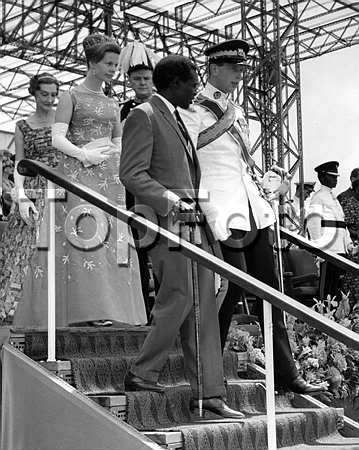The Kent Festoon Tiara has become one of the most recognisable jewels in the Kent Family collection and is still worn at important royal gatherings today. However its origins remain a mystery that continues to fascinate historians and jewellery lovers alike.


The Tiara first appeared at the 1953 Coronation of Queen Elizabeth II. Worn by Princess Marina, Duchess of Kent, the tiara features several elaborate, graduated pinnacles of diamonds (festoons), each topped by a single pearl. Originally, the base of the tiara contained a row of diamonds but these were later replaced by pearls.



Princess Marina of Greece and Denmark married Prince George, Duke of Kent, Fourth Son of King George V of England in 1934. After her marriage, she became a prominent member of the British Royal Family and as such, she was required to attend important state functions. Even after Prince George’s tragic death in 1942, Marina was still a valued member of the extended Royal Family and would continue to serve the British people and the Monarchy at ceremonial events.





But where did this Tiara come from?
As was tradition at the time, Marina received many bejewelled wedding gifts from both her own family and her new royal in laws including
a pair of Cartier clips , her mother’s Pearl Bandeau and her famous Diamond Bow Brooch
But as we can see from this photograph, The Festoon Tiara is not amongst presents that were put on display for the public.

In his book Tiaras, A History of Splendour, the jeweller Geoffrey Munn states that “although the tiara is in a case from Cartier, an attribution to Cartier as the maker seems “unsafe”. He also states that the tiara was possibly made in England circa 1900. Mr Munn is the managing director of the renowned jeweller Wartski and has worked extensively with jewellery. For this book he would’ve examined the tiara personally and can therefore be regarded as a credible source.
Beth Brisbane of History of Royal Jewels Message Board has conducted extensive research through newspaper archives, this tiara may have belonged to Queen Alexandra. Although there are several mentions of a pearl and diamond tiara worn by the Queen at events, there is no photographic evidence to confirm this.
Another theory is that it was an inherited piece from the vast collection of Queen Mary after her death in 1953, but once again Beth has discovered archive footage of Princess Marina wearing the Festoon tiara to a film premiere in 1951.


My personal belief is that this tiara was inherited from Princess Victoria of Wales (a daughter of Queen Alexandra, pictured) when she died in 1935. Princess Victoria was very close to the Duke of Kent and being childless, she left most of her estate (including her home Coppins) to him. This would explain why Princess Marina did not start wearing this tiara until the 1950s, almost 10 years into her widowhood.



Princess Alexandra of Kent, Marina’s only daughter, was among the limited number of female working members of the Royal Family during the 1950s and 60s. In 1960, while representing her cousin Queen Elizabeth II at the Independence of Nigeria, Princess Alexandra borrowed her mother’s Festoon tiara for the occasion. Moreover, Marina also loaned the tiara to her daughter-in-law, Katherine, Duchess of Kent, for a ceremony during the Independence of Uganda in 1965.
When she died in 1968, Princess Marina divided her jewellery amongst her three children. Unlike his brother, the Duke of Kent, her youngest son Prince Michael has managed to retain a number of his mother’s jewels.
Prince Michael and his wife, Baroness Marie Christine von Reibnitz (known as Princess Michael of Kent) will often attend state banquets and international events on behalf of the Queen, wearing her mother in law’s tiara.










Further Reading:
